Volume 7 Issue 1 > pp. 13-24 • doi: 10.15627/jd.2020.2
Application of Different Circadian Lighting Metrics in a Health Residence
Nicola Busatto,* Tiziano Dalla Mora, Fabio Peron, Piercarlo Romagnoni
Author affiliations
Department of Architecture and Arts, IUAV University of Venice, Dorsoduro 2206, 30123 Venezia, Italy
* Corresponding author. Tel. +39 041.257.1234
nbusatto@iuav.it (N. Busatto)
tdallamora@iuav.it (T. Dalla Mora)
fperon@iuav.it (F. Peron)
pierca@iuav.it (P. Romagnoni)
History: Received 21 November 2019 | Revised 13 January 2020 | Accepted 20 January 2020 | Published online 20 February 2020
Copyright: © 2020 The Author(s). Published by solarlits.com. This is an open access article under the CC BY license (http://creativecommons.org/licenses/by/4.0/).
Citation: Nicola Busatto, Tiziano Dalla Mora, Fabio Peron, Piercarlo Romagnoni, Application of Different Circadian Lighting Metrics in a Health Residence, Journal of Daylighting 7 (2020) 13-24. http://dx.doi.org/10.15627/jd.2020.2
Figures and tables
Abstract
During the last three decades, various scientific researchers analysed the connection between natural elements and human life, both as far as well-being and productivity. This study simulates circadian lighting metrics on elderly occupants in a healthcare residence, with different types of metrics. It presents an application of some metrics that try to quantify the effects of natural light on the human being. Circadian Action Factor, Circadian Stimulus, and Equivalent Melanopic Lux are considered. Starting from the spectral power distribution parameter, the three metrics are compared. The final aim is to build up a standard technique to represent the effect of key design choices on the accomplishment of endorsed circadian framework boost for healthcare residences occupied by elderly people.
Keywords
Circadian, Lighting, Metrics, Health residence
1. Introduction
Light is fundamental to human life, potentially impact both physiological and mental conduct. During the previous three decades, scientific medical research shown that numerous parts of human physiology and conduct are impacted by retinal enlightenment [1]. Illuminance levels in indoor spaces have to reach level required for visual performance, yet additionally ought to add to spatial perception, security and well-being [2]. Insufficient lighting levels have been shown to affect human physiological cycles and consequently have adverse effects on people's health and performance [3]. Photobiology has highlighted a connection between human and light physiology and has proposed indicators and evaluation strategies. In any case, lighting experts are as yet applying such confirmations to an extremely constrained degree. One important field of examination is identified with the alleged circadian photo-entrainment. The Circadian photo-entrainment is a significant field of examination in this subject. It is the procedure by which the mind's inside clock winds up synchronized with the day by day light and dim natural cycle. In people, numerous physiological and conduct rhythms, including the sleep-wake cycle, body temperature and hormone levels, falter inside a 24-hour time frame. In the early 2000s [4-6] recognized that the 400-500 nm wavelength district gives circadian contribution to managing melatonin emission. Recently, the nearness of another photograph shade in charge of melatonin concealment in the human eye has turned out to be clear. This mediates circadian photoreception particular from rod and cone cell photo-pigments responsible for vision [3,7]. In humans, circadian reactions to light are believed to be interceded essentially by melanopsin-containing retinal ganglion cells, not rods or cones. Melanopsin cells are characteristically blue-light delicate, however get contribution from visual photoreceptors [8,9]. Consolidating such evidence in lighting plan and application would be imperative to get better living, working and learning encompassing. These recently discovered receptors characteristically photosensitive retinal ganglion cells, (ipRGC) have an altogether different reaction range from that of the different photoreceptors: their most extreme affect ability is fundamentally moved towards the blue region [5,6]. Likewise, they are linked to is the so-called circadian cycle, which is the common rest wake cycle. In practice, the introduction to blue light could change the cycle of hormones, cortisol and melatonin, which are in charge of mental movement execution crest during the day hours [10]. Recently it has been demonstrated how the ipRCG likewise create a visual sign. Their reaction is incredibly moderate and along these lines inadmissible for ordinary vision, yet it could make them extremely valuable for getting a handle on the moderate variety of environmental light, for example, the appearance of sunset or dawn [3,8]. The sign driving physiological and conduct light reactions (ipRGC terminating) is characterized by the consolidated impact of various photoreceptive procedures: the melanopsin-driven phototransduction system inside the ipRGC itself, and remote photoreception in poles and cones [1]. The accessible information show that the otherworldly affect ability of melanopsin, the photopigment of ipRGCs, is also invariant crosswise over species, with λ max at roughly 480 nm [1].
Every one of these instruments of light identification has a particular unearthly affect ability, characterized by the ghostly effectiveness of the photopigment communicated and the ghastly transmission properties of the visual media. The action of ipRCG has a key job in guideline of disposition and consideration. As a result, it is very important on one side in the stimulation of workers and students [11], and on the other side depressed [12-14] and elderly people [15]. With bright light and physical exercise can be treated with success seasonal affective depressive symptom; both can follow up on the aggravated circadian accuracy giving an added substance impact on mind-set [16]. Older people suffer from chronic sleeping problems and insomnia. A right presentation to light during daytime, expands the night-time emission of melatonin and thus emphatically effect rest. [17]. In addition, Alzheimer and Dementia disease are associated with some unsettling influence of circadian mood and a deliberately arranged light/dark pattern example has been show ground-breaking non-pharmacological instrument to improve rest productivity and combination [15,18]. The utilization of circadian investigation to building plan and lighting configuration has been object of enthusiasm of certain examinations in the most recent years. Bieske explored the impacts of streamlined light on the state of occupants in a nursing home [19]. A light ceiling in the lounge room permitted to change illuminance and light colour temperature with an effect on circadian impact. Results demonstrated that [20] light exposure produced higher vitality and orientation, less sleep during daytime and a better sleep at night. Pechacek et al., considering lighting intensity, timing, and spectrum of radiation, analysed the possibility to organize the design of a hospital room to accentuate circadian stimulus [21]. Bellia examined lighting quality in a college classroom applying new metrics to analyse non-visual effects [22]. The outcomes demonstrate that intensity and spectral power distribution (SPD) of the light received by the eyes have an important role on circadian dynamic. Additionally, from a design perspective, the investigation called attention to how the envelope surfaces colour impact the SPD and therefore the colour correlated temperature of light.
The main objective of the paper is to demonstrate how the three circadian assessment metrics acv, CS, EML can be used and compared in simulating the effects of light within the built environments, through the verification of the illuminance on the vertical plane and the SPD of light sources. One more objective is the implementation of the circadian effects of light sources in relation to the activities carried out by patients in the assisted healthcare residence. The novelty of this study consists in the use and subsequent comparison of all the acv, CS, EML metrics in the currently literature regarding the evaluation of the effects of light from the circadian point of view in the built environments. The aim is to demonstrate how the light and the activity carried out in the environments are closely related to human comfort and that therefore the metrics also give design indications. The expected results concern the validity of the results of acv metric, currently outdated in comparison to the other more updated ones, and the demonstration that circadian metrics give clear and coherent indications to improve the light in relation to the people activities.
2. Method
The paper methodology is structured as follows: in the first part different metrics for calculating the circadian rhythm are considered according the current state of research and literature; in the second part a case study of a healthcare residence is presented to evaluate the circadian effects in two rooms, testing the real state and proposing an improvement scenario.
The calculation involves measurement and simulation phases. In fact, the purpose of the measurement phase is to obtain spectral radiance values for each color within the case study. For the evaluation of the spectral radiance the measurements are carried out with a spectroradiometer. The instrument used is the Spectrascan PR-650 spectrometer radio from Photoresearch. The measurement points, locations and input, output data are specified in the following paragraphs.
As regards the evaluation of the obtained results, this study presents only the values referred to the vertical plane of the point of view since the most relevant for the evaluation of the circadian stimulus. In fact, for the evaluation of the light effects by circadian point of view, the simulations must be carried out on the vertical plane corresponding to the eye of the observer in order to evaluate how many lux of illuminance reach the retina: the photoreceptors of the circadian system, namely the ganglion Melanospina cells, are properly placed inside the retina and are mostly stimulated by light from above. So, the evaluation of the light from the circadian point of view is different from the evaluation of the lighting only from the visual point which occurs only on the horizontal plane. This consideration is deeply described in the study of Brainard [5] and Thapan [6] about the melatonin suppression by different quantities of lux measured directly inside human eyes and therefore tested on vertical plane. At last a discussion of the main outcomes is presented.
3. Circadian metric
The general photometry based on visual performance of light is not sufficient to explain light by a circadian perspective. Gall [20] proposes a circadian action function C (λ), obtained directly from experimental studies by Brainard [5] and Thapan [6]: it concerns on the melatonin suppression actuated by various wavelengths of the light stimulus, using an immediate strategy for relating the circadian sizes with those photometric by means of the circadian action factor acv. The phenomenon of spectral opposition raises doubt about the circadian photometric proposed by Gall and over the most recent couple of years. Figueiro et al. has proposed a metric called circadian stimulus (CS) that has assumed a key role in the field of lighting design for healthy buildings [23]. A third approach refers to melanopic illumination calculates suppression of melatonin relying on the composition spectral value of the light weighted irradiance to cornea with respect to the one of a kind spectral contents of the 5 types of receptors. The researchers recorded the light exposures of each of the photoreceptors in the greater whole form is a power distribution spectral corneal, through the calculation of irradiance [24]. Despite the huge range of research carried out, it was not viable to reach the description of light as a one-dimensional quantity which predicts non photographic optical responses. To quantify the effects of the 5 types of α-opic equivalent daylight illuminance (lx), Al Enezi [25] and Lucas [1], proposed a new metrics and introduced the α-opic illuminance concept Eα. The characteristics of the different metrics are presented in the following chapters.
3.1. Circadian action factor acv
Utilizing the action factor, acv, Gall [20] set up a circadian photometry, and the values can be obtained from radiometric quantities through the circadian affectivity C (λ) rather than the photopic affectivity V (λ). In Fig. 1, it is conceivable to take note of that the circadian activity capacity bend decided experimentally by researchers is maximally sensitive to short wavelengths (blue zone) regarding visual sensitivity curve [5,6].
This leads to see the amount of artificial lighting with high correlated colour temperatures (approx. 4,500 K), currently used for lighting the building, is not practicable in suppressing daytime melatonin in contrast to natural light, which is rather rich in short wavelengths (blue and purple).
Gall outlined an immediate strategy for relating the circadian quantities with photometric ones, by the characterization of the following circadian quantities: flux Φc, intensity Ic, illuminance Ec, luminance Lc [20].
where Km represents the maximum value of visual spectral efficiency equal to 683 lm/W, Φel represents the spectral distribution of radiant flux, Φcp is the reflected circadian flux.
The circadian efficiency factor acv describes the connection between circadian quantities (for this situation photometric circadian quantities) and photometric quantities (in the equation denominator Φ signifies luminous flux) [20].
The Circadian action factor acv is currently the means through which you can get circadian quantities from those photometric quantities.
where Ev is the Illuminance.
The Circadian action factor acv can be accepted as an indicator for the circadian effect of a light source. Concerning lighting design mindful of circadian perspective, (Table 1) Gall proposes ideal combinations between individual activities, the Circadian activation factor acv and colour temperature of light sources [20]. This is a coefficient that roughly describes the circadian efficiency of the various colours of light, yet it doesn't consider the phenomenon of spectral opposition [26].
Table 1
Table 1. Relationship between people activities, Circadian action factor, and colour temperature.
3.2. Circadian Stimulus CS
The significance of the spectral distribution of light emission is connected to the normal for yellow/blue and red/green spectral opposition of the circadian framework: due to this phenomenon, with a similar intensity of the blue component, a source containing a proportional yellow component stimulates significantly less than one that has these two components strongly unbalanced in favor of blue [27]. Figueiro et al. [28] demonstrated that only 18 lux delivered by a blue LED are progressively proficient in the suppression of 450 lux melatonin than white light created by a mercury vapor lamp having a spectrum characterized by a peak in blue and one in yellow. The phenomenon of spectral opposition of the circadian system therefore makes it difficult to set up an immediate connection between the intensity of luminous stimulus and the level of melatonin suppression without also considering its real spectral composition: in other words, it is not possible to add the contribution of the different lengths wave taken individually. The way that the circadian system is progressively delicate to blue light decreasing the yellow-red components leads seeing the amount of the white artificial light, at present utilized for lighting buildings [27].
The Circadian Stimulus (CS) proposed by Lighting Research Center at Rensselaer Polytechnic Institute depends on scientific model of human circadian photo-transduction created by Rea (Fig. 2) and it depends on the neuroanatomy and neurophysiology of the retina and on distributed psychophysical investigations of night-time melatonin suppression utilizing lights of various spectral power distributions [29]. The model creates values of circadian light (CL) for any spectral power distribution (i.e., for any light source, real or imagined, at any irradiance). CL metric is characterized by a high total limit to optical radiation with a peak spectral response at short wavelengths. The model records for interest of ipRCGs as well as rods and cones in circadian phototransduction by means of neural connections, including spectral opponency, in the external plexiform layer of the retina. CL is utilized to allude the term CS, utilized in the paper [23] that describe the model of circadian phototransduction. CL is spectrally weighted irradiance for the human circadian system, a term progressively compares to illuminance, which is spectrally weighted irradiance for the human visual system. The term CS and CL will be from this time forward used to describe the effective photic stimulus for the circadian system as estimated by intense night-time melatonin suppression [29]. The production of this measurement is always developing, additionally on the grounds that it at first doesn't consider a few perspectives, which are significant for understanding the impacts light on the circadian system, for example, spatial design, timing, duration and history of the luminous exhibition. The model proposed by Lighting Research Center is based on the way that the CS factor demonstrates how the retina changes light signals into neural signals for the circadian system. Therefore, a significant initial phase in deciding if a lighting system will give one endorsed measure of CS is to decide the distribution of the spectral irradiance of the incidence of light on the cornea. From the spectral distribution of the irradiance it is in this possible to calculate the circadian light CLA, which is irradiation to the cornea, weighted to mirror the spectral sensitivity of the system human circadian estimated from the acute supposition of melatonin after one hour of exposure; and the circadian stimulus CS, which turns out to be the efficacy of irradiation spectrally weighted to the cornea from the threshold (CS = 0.1) to saturation (CS = 0.7), (Table 2). So as to accomplish these outcomes, the Lighting Research Center has completed incalculable tests on patients suffering from Alzheimer\'s disease. Such research has demonstrated that exposure to a CS of 0.3 or more in the eye, for at least an hour in the first part of the day, it is effective to stimulate the circadian system.
Figure 2
Fig. 2. Nocturnal human melatonin suppression data (left ordinate), vs CL quantities (abscissa) predicted by the model of Rea et al. [29].
Lighting Research Center Rensselaer Polytechnic Institute has promoted a CS [26] to help professionals lighting designer to select sources and levels of light, which allow adequate exposure of buildings to light. This tool facilitates the calculations of CLA and CS for different spectra of light sources, to some spectrums of predefined light sources are already set up, but it is also you can add new ones. CLA circadian light is irradiance at the cornea weighted to reflect the spectral sensitivity of the human circadian system as measured by acute melatonin suppression after a one-hour exposure.
CL is spectrally weighted irradiance for the human circadian system, a term more comparable to illuminance, which is spectrally weighted irradiance for the human visual system.
The units of CL (spectrally weighted irradiance in W/m2) are not particularly intuitive to a user, a normalized quantity, CLA, was derived to more easily compare CL values with values of photopic illuminance, in (lx).
During the design plan, the designers must decide the project objectives, that is if they want to reach a level of relaxation or vigilance. Once the basic condition is established, the, which will vary throughout the day in order to promote health and improve the functionality of the occupants [23].
The tool offered by Lighting Research Center to encourage calculations of CLA and CS for a few example light source spectra as well as user-supplied light source spectra. Some considerations need to remember when designing with this tool to calculate CS:
- Request the SPD about the light sources under consideration yet maintain cautious no longer to matter solely on their CCTs. While light sources which include higher CCTs (5,000-6,500 K) will usually furnish higher CS, so is no longer usually the case. It is possible, due to the fact example, that a 3,500 K furnish choice give much less CS than a 3,000 K source. Moreover, two light sources rated due to the fact the equal CCT might grant entirely one of a variety CS values depending about theirs SPD. The physiological causes because of this variation keep been studied then are described somewhere else [23];
- Design for vertical (≈ corneal) illuminance (EV) at the eye, and not just horizontal illuminance (EH) on the workplane [23];
- Choose light sources that provide the best (EH) to (EV) ratio [23].
3.3. Equivalent Melanopic Lux
The approach of melanopic illumination calculates suppression of melatonin relying on the composition spectral value of the light weighted irradiance to cornea with respect to the one of a kind spectral contents of the 5 types of receptors. According to contemporary statements there are at least 5 exceptional kinds of receptors in the human eye. The researchers recorded the light exposures of each of the photoreceptors in the greater whole form is a power distribution spectral corneal, through the calculation of irradiance [24]. Despite the huge range of research carried out, it was not viable to reach the description of light as a one-dimensional quantity which predicts non photographic optical responses. To calculate the values of the 5 types of illuminance, Al Enzi introduced the equivalent α-optical illuminance concept Eα, where α indicates the retinal photopigment for a given organism [25], subsequently taken up Lucas, creator of the EML metric [1]. Given a spectrum, the technique approves the obtainment of the "α-opic" equal illumination for every of the five photoreceptors in the eye (three cones, rods and the ipRGC). The precise α-optical equal illumination a photometric volume associated to the spectral distribution irradiance strength Ee, λ (λ). To render the illuminance melanopic, calculated according to the approach by means of Al Enzi, equal to photopic illumination, Lucas proposed [1] a new function. The new approach proposed by Lucas also offers that the melanopic illuminance is measured through a unit of measure of the Melanopic Lux equivalent (EML) (Table 3). The EML is measured vertically at the height of the observer's eyes and to calculate the equal lux melanopic, so it is indispensable to multiply the illuminance value incident on the vertical plane of the observer (Ev) for a coefficient acquired on the weighting of the light source spectrum (R), in accordance to the Eq. (3):
where L is the visual lux, R is the melanopic Ratio.
For example, incandescent lights furnish 200 lux in a space produce 108 Equivalent Melanopic lux. If daylight is modelled to furnish the identical visible brightness (200 lux), it will additionally furnish 220 Equivalent Melanopic lux.
The use of this metric was adopted inside a rating system that identifies the parameters of well-being for architectural constructions: the international WELL Building Standard, devised via the International WELL Building Institute [30] to asses and certify the level of health and well-being of the customers inside the environments. The benchmarks that the WELL protocol identifies have been used for healthcare environments in terms of natural and artificial light [24].
4. Simulation
4.1. Case study
The study model is the RELAXXI R.S.A healthcare residence (Fig. 3) for elderly people located in Noale (Venice). The choice is motivated because the building represents a suitable environment to control natural and artificial lighting in the context of the circadian survey. In fact, it is essential to hold a high level of vigilance and attention in the elderly during sunlight hours, by breaking down the melatonin suppression, as well as resting in the night hours and where most of them have more or less pathologies, such as Alzheimer's or senile dementia and which usually exhibit delays in the circadian rhythm and other sleep-related disorders.
Simulations have been performed for two opposite areas in terms of attendance and use. Occupancy times and traditional daily timetable have been recorder through surveys and interviews with medical personnel to drive the preference of environments to be analysed: gym and patient room. The gym is used for rehabilitation, physiotherapy activities and motor rehabilitation and stimulation of patient function in defined time slots, in the morning from 9.00 to 10.00, while in the afternoon from 15.30 to 19.30. The patient's room is mainly used for night and afternoon rest and is occupied mainly from 19.45 to 7.30 awakening time and from 13.30 to 14.30 for patients' afternoon rest. According to the guidelines available today, in the gym should be maintained lighting conditions suitable for rehabilitation activities to maintain high levels of vigilance and concentration of patients, while in the room should be maintained lighting conditions that predispose to rest and relaxation of patients. The simulations provide verification of the Circadian action factor, Circadian Stimulus and Equivalent Melanopic Lux in the state of art and then in a project proposal in the simulations with the measures utilized to enhance the circadian action involving it in relation to the supposed uses and the activities of healthcare residence’s people.
4.2. Current state - Gym
Gym room (Fig. 4) is 13.50 meters (m) wide by 7.90 m deep by 3 m high (Fig. 5). The gym room was used to analyse acv, CS and EML with natural and electric lighting. The room provides a ceiling and partitions with RAL 9003 (x = 0.3533 – y = 0.3688) colour while flooring had a RAL 4006 (x = 0.4289 – y = 0.2784), which means “RAL number” as paint colour. Horizontal windows of variable sizes are positioned in the East façade. The windows present a visible transmission of 0.75. Simulations with natural lighting are carried out using CIE D65 Overcast Daylight which represents the worst sky condition. Simulations with electric lighting have been carried out using lamps and SPD presented in the room. Adopted lamps is Philips MASTER TLD – colour temperature 3,000 K (Fig. 6). In order to estimate the (acv), (CS) and (EML) obtained at the eyes of a patient, calculations were set on a vertical plane 1.80 m above the floor. To account for specific point of view of patient, the calculation points were primarily based on three different points of view direction into the simulation room (Fig. 5). The illuminance, for the overcast daylight scenario, simulated at eye level was 195 lx, with electric light Illuminance (lx) = 230. The calculation of Illuminance and acv have been calculated with Radiance simulation program. CS have been calculated with “Circadian Stimulus Calculator” developed by Lighting Research Center [23]. EML have been calculated with “Melanopic ratio data sheet” provided by Well Building Standard, EML = L × R [1], where L is equal to 195 lux and R is equal to 1.3262 for CIE D65. Gym presented 3 lines of lamps with 4 lamps in each line with a low colour temperature of 3,000 K (Fig. 6).
Figure 5
Fig. 5. Graphical drawings for Gym room: (a) section and (b) plan with allocation and placement of points of view for camera for simulation output.
The gym presents the state described in Fig. 7: a circadian action factor acv = 0.91, CS = 0.32 and EML = 258 with natural light and acv = 0.59, CS = 0.21 and EML = 86 with electric light only, primarily given through the presence of lamps with a low colour temperature of 3,000 K and SPD of lamps with a peak around 600 nm. In this case the acv, CS and EML results are in line with the activities of the people in this space that require attention for the rehabilitation of patients during the day; on the contrary, it seems rather low with artificial light as regards the possible activities carried out in the hours without the presence of natural light.
4.3. Improvement state - Gym
In the state of art gym presents a high circadian action factor acv, CS and EML; to get better it even with the only contribution of the electric light, it is proposed a ceiling of blue paint RAL 5012 (x = 0.2493 – y = 0.2873) and lamps with high CCTs of 6,500 K using the same lamps Philips MASTER TLD (Fig. 8). From the point of view of electric light, it would be necessary to raise the values to obtain at least a 30% of CS. The illuminance, for the overcast daylight scenario, simulated at eye level was 195 (lx), with electric light Illuminance (lx) = 251.
The gym presented an acv factor, CS and EML already good in its state of art with only daylighting, but to improve the factors even with the only contribution of the electric light present it was proposed a blue-coloured ceiling and the use of lamps with high CCTs of 6,500 K obtaining a high acv index of 0.79, 0.31 CS and EML of 255 (Fig. 9).
4.4. Current state - patient room
Patient room (Fig. 10), 5.50 m wide by 3.80 m deep by 2.70 m high, the patient room is used to analyse acv, CS and EML with natural and electric light. The room provides a ceiling and walls with RAL 9003 (x = 0.3533 – y = 0.3688), while floor had a RAL 7047 (x = 0.3570 – y = 0.3644). Vertical windows 0.90 m width 2.40 m height were placed in the East façade at first floor. The windows present a visible transmission of 0.75. Simulations with natural light are carried out with overcast sky. Simulations with electric light are carried out using lamps and SPD presented in the room. In order to estimate the acv, (CS) and EML obtained at the eyes of people, calculations are set on a vertical plane 0.85 cm above the floor. To account for different point of view of patient the calculation points are based on three different point of view direction into the simulation room (Fig. 11). The illuminance, for the overcast daylight scenario, simulated at eye level was 291(lx), with electric light Illuminance lx = 340. The patient room presents 3 typologies of lamps with a medium colour temperature of 4,000 K, using the same lamps Philips MASTER TLD (Fig. 12).
Figure 10
Fig. 10. Patient room at current state, (a) during daylight and (b) in artificial light conditions.
Figure 11
Fig. 11. Graphical drawings for Patient room: (a) section and (b) plan with allocation and placement of points of view for camera for simulation output.
The patient room offers a suitable circadian action factor acv, CS and EML for the duration of daylight hours with natural light acv = 0.81, CS = 0.39, EML = 386 while with electric lighting acv = 0.66, CS = 0.30, EML = 199 with electric light solely above the bed, primarily given by the presence of light sources with an average colour temperature of 4,000 K using the same lamps Philips MASTER TLD (Fig. 13). In this situation, in evening hours the patient room needs a circadian action factor acv, a circadian stimulus and melanopic lux lower to promote relaxation and the sleep, furthermore the use of appropriate colours of the partitions favourable from the psychological point of view.
Figure 13
Fig. 13. Patient room in state of art conditions: (a) overcast sky conditions (b) electric light.
4.5. Improvement state – patient room
In the patient room intervening in the partitions with a green tint RAL 6017 (x = 0.3471 – y = 0.4550), colour neither warm nor cold which does not amplify the heart rate and provide serenity; the use of lamps with CCT of 2,700 K using the same lamps Philips MASTER TLD (Fig. 14), keeps an high acv, CS and EML at some point of the daylight hours, however at the same time is reduced considerably in the evening hours with artificial light only, ideal to promote relax and the sleep of patients. With Overcast daylight was Illuminance (lx) = 291, while with electric light Illuminance (lx) = 190.
The patient room showed acv factor, CS and EML already excessive in its state of art with daylighting, but with the solely contribution of the electric lighting acv factor, CS and EML too high all through the evening hours and not in line with the benchmark proposed (Fig. 15). Intervening in the colour of the partitions with a green tint, and the use of lamps with low CCTs of 2,700 K using the same lamps Philips MASTER TLD (Fig. 14), a high acv factor, CS and EML is maintained all through the daytime, however at the same time it lowers significantly in the night-time with electric lighting, ideal to promote relaxation, sleep and the melatonin secretion.
Figure 15
Fig. 15. Patient room in project proposals: (a) overcast sky conditions (b) artificial light.
5. Discussion and results analysis
5.1. Daylighting
The research gives numerous insights. Simulation of the acv, CS and EML provide evidence of dependence not only on colours of the walls, but additionally on the spectral interreflections inside the environment; great contribution is given by the quantity of illuminance EV at the eye of patient, which is a characteristic of the quantity and dimension of windows in the case of natural light simulation; in this case the CIE D65: Overcast Daylight 6,500 K is very rich in the short wavelengths (blue and violet), then it stimulates the circadian maximum activity in humans.
In this research, the analysis the state of the art (Figs. 16-18) of analysed areas always gives higher acv, CS and EML than benchmark proposed by Gall, Rea and Well Building Standard to promote melatonin suppression. This is an excellent result with regard to daytime with daylighting, as in a health residence for non-self-sufficient elderly people is necessary to hold a high level of vigilance and attention in the elderly patients, breaking down the melatonin suppression, where most of the occupants are affected by serious diseases such as Alzheimer's or senile dementia, which typically exhibit delays in the cycles of circadian rhythm and different sleep disorders.
5.2. Electric lighting
The electric lighting simulation scenario is specific from the daylighting, as a number of electric light sources with distinct characteristics in terms of colour temperature and spectrums have been tested. Based on the literature research and then through the simulations, it was viable to test as light sources with CCTs equal to 6,500 K, characterised by the presence of blue wave length, make a contribution to increasing the acv [20] and CS [23]. The values of the state of improvement are higher than current state in the gym, because the goal was to improvement circadian efficacy of light in relation of activities. Conversely, the use of lamp with SPD lower than 3,000 K decreases the impact of circadian stimulus. In addition to altering lamp types in the environments where necessary, similarly verification on room colour affect has been performed. Results have shown that colour contributes in the amplify and/or reduce the circadian action factor acv, as the calculation of the distribution of the circadian illumination is affected through inter-reflections flow between the surfaces making up the indoors itself [31], while in the CS approach partitions colours do not affect results (Figs. 19-21).
Electric light design goals to reduce the melatonin suppression during the day to promote higher activity of the patients, and the capacity to manage and follow the patient's circadian rhythm in the evening, promoting the secretion of melatonin during the night-time hours. It is relevant to observe that keeping appropriate values of acv, CS and EML offers advantages not solely for the health of the elderly patients and their biological clock adjustment, but additionally in terms of night-time staff management. The electric lighting proposals have been designed to follow the circadian rhythm of patients in accordance to the activities and intended use.
In particular, the important characteristics of the light that influence the factors are quantity of light, direction, time of the stimulus and spectral distribution. In addition to the physiological aspects, also psychophysical reactions of people in connection with unique warm and cold colours of light and environments have been considered, even if in a qualitative way. As considered in the research performed by Figuero [32], particular colours used to facilitate the circadian rhythm normally contrast in reactions of patients from a psychological point of view. In this work, authors tried to balance physiological and psychological well-being trying to use appropriate colours for each psychophysiological field. In fact, the green coloration has no precise psychological impact, but still stimulates serenity, does not amplify blood pressure, increases the optimism and eliminates depressive symptoms.
6. Conclusions
This study compares different metrics, Circadian action factor (acv), CS and Melanopic Lux (EML), to simulate the melatonin suppression for human health needs in a healthcare residence. Even if the acv is considered a surpassed method and it doesn’t contemplate the phenomenon of spectral opposition results got by means of the simulations are comparable with the performances given by the CS and EML. In fact, in the simulations of the two study rooms, the results show that ‘is coherence between the values of the metrics analysed results shown the key role of the spectral component of the light (SPD) for the stimulation of circadian system. Actually, in daylight simulations the metric values are high because the spectral component is rich in short (blue) lengths that stimulate the circadian effect. Results of the performed simulations confirmed the relationship between the level of eye lighting on the vertical plane and melatonin suppression in humans being, according to the scientific literature.
Results have shown that colour contributes in the amplify and/or reduce the circadian action factor acv, as the calculation of the distribution of the circadian illumination is affected through inter-reflections flow between the surfaces is demonstrated in the simulation performed in this study and is based on K. Wandachowicz [31].
In fact, simulation output shown how the acv factor is influenced not only by the spectral component of the light but also by the colour of the room surfaces where the inter-reflections interact: for example on gym room the acv factor increases from the current state to the improvement state by only changing the colour of the ceiling with blue. The same effects are verified also for CS and EML methods in terms of change colour, especially due to the change is due to the change in the light source. With reference to the illuminance value, the only change in the colour of the surface does not affect and change the illuminance values for CS and EML metrics.
The results obtained are important because today lighting designers perform simulations to predict only horizontal plane illuminance, where this method only allows vision to be guaranteed. But in lighting design of natural and electrical light, suitable stimulation of the circadian cycle is also influenced by the illumination at eye level on the vertical plane, which deserves dedicated simulation work. Modern society lifestyle is based on people studying, working and living, in confined spaces where the use of electric light is the basic lighting. Learning and investigating the influence of lighting and its effects in humans being result very important for a sustainable development in regard to human health. This is important in reference to the elderly people of health and hospital environments, where it will be indispensable to get a suitable and innovative spaces from a lighting point of view in order to allow the best performance of visual comfort, according to the psychophysiological point of view.
Future developments include tests and simulations on the same metrics considering the combination of daylight and electric light, and in addition also the effects of a clear sky and intermediate sky in order to obtain values comparable with the real situation of use of the environments.
Acknowledgement
The authors would like to acknowledge to all residents, and staff of the RELAXXI R.S.A. Santa Maria dei Battuti for their cooperation in this research.
Contributions
The authors have contributed equally.
References
- R. J. Lucas, S. N. Peirson, D. M. Berson, T. M. Brown, H. M. Cooper, C. A. Czeisler, M. G. Figueiro, P. D. Gamlin, S. W. Lockley, J. B. O’Hagan, L. L. Price, I. Provencio, D. J. Skene and G. C. Brainard, Measuring and using light in the melanopsin age, Trends in Neurosciences 37 (2014) pp. 1-9. https://doi.org/10.1016/j.tins.2013.10.004
- D. Di Laura, K. Houser, R. Mistrick and G. Steffy, The lighting handbook: reference and application., New York: Illuminating Engineering Society of North America, 2011.
- J. J. Gooley, S. M. Rajaratnam, G. C. Brainard, R. E. Kronauer, C. A. Czeisler and S. W. Lockley, Spectral responses of the human circadian system depend on the irradiance and duration of exposure to light, Science Translational Medicine 2 (2010) 31-33. https://doi.org/10.1126/scitranslmed.3000741
- D. M. Berson, F. A. Dunn and M. Takao, Phototransduction by Retinal Ganglion Cells That Set the Circadian Clock, Science 295 (2002) 1070-1073. L. Micheli, N. Sarmah, X. Luo, K. Reddy, and T. Mallick, Opportunities and challenges in micro-and nano-technologies for concentrating photovoltaic cooling: A review, Renewable and Sustainable Energy Reviews 20 (2013) 595-610. https://doi.org/10.1016/j.rser.2012.11.051
- G. C. Brainard, J. P. Hanifin, J. M. Greeson, B. Byrne, G. Glickman and E. Gerner, Action spectrum for melatonin regulation in humans: evidence for a novel circadian photoreceptor, Journal of Neuroscience 21 (2001) 6405-6412. https://doi.org/10.1523/jneurosci.21-16-06405.2001
- K. Thapan, J. Arendt and D. J. Skene, An action spectrum for melatonin suppression: evidence for a novel non-rod, non-cone photoreceptor system in humans, Journal of Physiology 535 (2001) 261-267. https://doi.org/10.1111/j.1469-7793.2001.t01-1-00261.x
- A. Sand, T. M. Schmidt and P. Kofuji, Diverse Types of Ganglion Cell Photoreceptors in the Mammalian Retina, Prog. Retin Eye Res. 31 (2012) 287–302. https://doi.org/10.1016/j.preteyeres.2012.03.003
- R. L. Brown and P. R. Robinson, Melanopsin-Shedding Light on the Elusive Circadian Photopigment, Chronobiol Int. 21 (2004) 189–204. https://doi.org/10.1081/cbi-120037816
- J. L. Ecker, O. N. Dumitrescu, K. Y. Wong, N. M. Alam, S. K. Chen, T. LeGates , J. M. Renna, G. T. Prusky, D. M. Berson and S. Hattar, Melanopsin-expressing retinal ganglion-cell photoreceptors: cellular diversity and role in pattern vision, Neuron 67 (2010) 49-60. https://doi.org/10.1016/j.neuron.2010.05.023
- C. Lok, Seeing without seeing, Nature 469 (2011) 284-285. https://doi.org/10.1038/469284a
- G. Vandawalle, E. Balteau, C. Philips, C. Degueldre, V. Moreau, V. Sterpenich and et al., Daytime Light Exposure Dynamically Enhances Brain Responses, Current Biology 16 (2006) 1616-1621. https://doi.org/10.1016/j.cub.2006.06.031
- L. M. Monteggia and E. T. Kavalali, Circadian rhythms: Depression brought to light, Nature 491 (2012) 537–538. https://doi.org/10.1038/nature11752
- T. A. LeGates, D. C. Fernandez and S. Hattar, Light as a central modulator of circadian rhythms, sleep and affect, Nature Reviews Neuroscience 15 (2014) 443–454. https://doi.org/10.1038/nrn3743
- J. Van Hoof, M. J. Aarts, C. G. Rense and A. C. Schoutens, Ambient bright light in dementia: Effects on behavior and circadian rhythmicity, Building and Environment 44 (2009) 146–155. https://doi.org/10.1016/j.buildenv.2008.02.005
- N. Hanford and M. Figueiro, Light Therapy and Alzheimer’s Disease and Related Dementia: Past, Present, and Future, Journal of Alzheimer's Disease, 33 (2013) 913–922. https://doi.org/10.3233/jad-2012-121645
- S. Leppamaki, T. Partonen and J. Lonngvist, Bright-light exposure combined with physical excercise elevates Mood, Journal of Affective Disorders 72 (2002) 139-144. https://doi.org/10.1016/s0165-0327(01)00417-7
- E. van Someren, Circadian and sleep disturbances in the elderly, Experimental Gerontology 35 (2000) 1229-1237. https://doi.org/10.1016/s0531-5565(00)00191-1
- D. Harper, L. Volicer, E. Stopa, A. McKee, M. Nitta and A. Satlin, Disturbance of endogenous circadian rhythm in aging and Alzheimer disease, The American Journal of Geriatric Psychiatry 13 (2005) 359-68. https://doi.org/10.1097/00019442-200505000-00004
- K. Bieske, D. Gall, C. Vandahl and O. Dierbach, Influence of artificial daylight on gerontopsychiatric care of elderly people, in: CIE 2nd expert symposium on light and health, Ottawa, 2006.
- D. Gall and K. Bieske, Definition and measurement of circadian radiometric quantities, in: CIE symposium on light and health: non visual effects., Vienna, 2004.
- C. S. Pechacek, M. Andersen and S. W. Lockley, Preliminary Method for Prospective Analysis of the Circadian Efficacy of (Day)Light with Applications to Healthcare Architecture, LEUKOS 5 (2008) 1-26. https://doi.org/10.1080/15502724.2008.10747625
- L. Bellia, A. Pedace and G. Barbato, Lighting in educational environments: an example of a complete analysis of the effects of daylight and electric light on occupants, Building and Environment 68 (2013) 50-65, 2013. https://doi.org/10.1016/j.buildenv.2013.04.005
- M. G. Figueiro, K. Gonzales and D. R. Pedler, Designing with circadian stimulus, LD+A, Ottobre 2016.
- L. Bellia, F. Fragliasso and E. Stefanizzi, Sensori circadiani per la caratterizzazione dell’illuminazione, ENEA, 2016.
- J. a. Enezi, V. Revell, T. Brown, J. Wynne, L. Schlangen and R. Lucas, Journal of biological rhythms 26 (2011) 314-323.
- L. R. C. -. R. Polytechnic, CS Calculator, Available: https://www.lrc.rpi.edu/cscalculator/.
- M. Barbalace, F. Gugliermetti, F. Lucchese and F. Bisegna, “Studio per la valutazione degli effetti della luce sugli esseri umani,” Enea, Roma, 2012.
- M. G. Figueiro, J. D. Bullough, H. R. Parsons and M. S. Rea, Evidence for Spectral Opponency in the Suppresion of Melatonin by Light in Humans, NeuroReport 2 (2004) 313-316. https://doi.org/10.1097/00001756-200402090-00020
- M. S. Rea, M. G. Figueiro, A. Bierman and J. D. Bullough, Circadian Light, Journal of Circadian Rhythms 8 (2010) 1-10. https://doi.org/10.1186/1740-3391-8-2
- IWBI, Well Building Standard, 2014.
- K. Wandachowicz, “Calculation of the circadian illuminance distribution with Radiance,” Poznan University of Technology, Poznan, 2006.
- M. G. Figueiro, A. Bierman, B. Plitnick, and M. S. Rea, Preliminary evidence that both blue and red light can induce alertness at night, BMC Neuroscience 10 (2009) 1-11. https://doi.org/10.1186/1471-2202-10-105
Copyright © 2020 The Author(s). Published by solarlits.com.
 HOME
HOME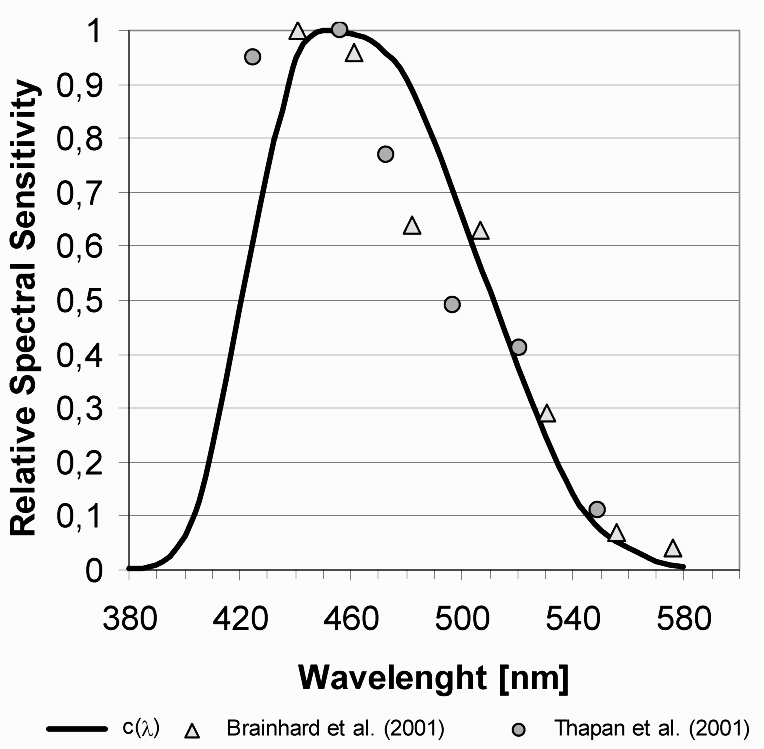 Figure 1
Figure 1 Table 1
Table 1 Table 2
Table 2 Table 3
Table 3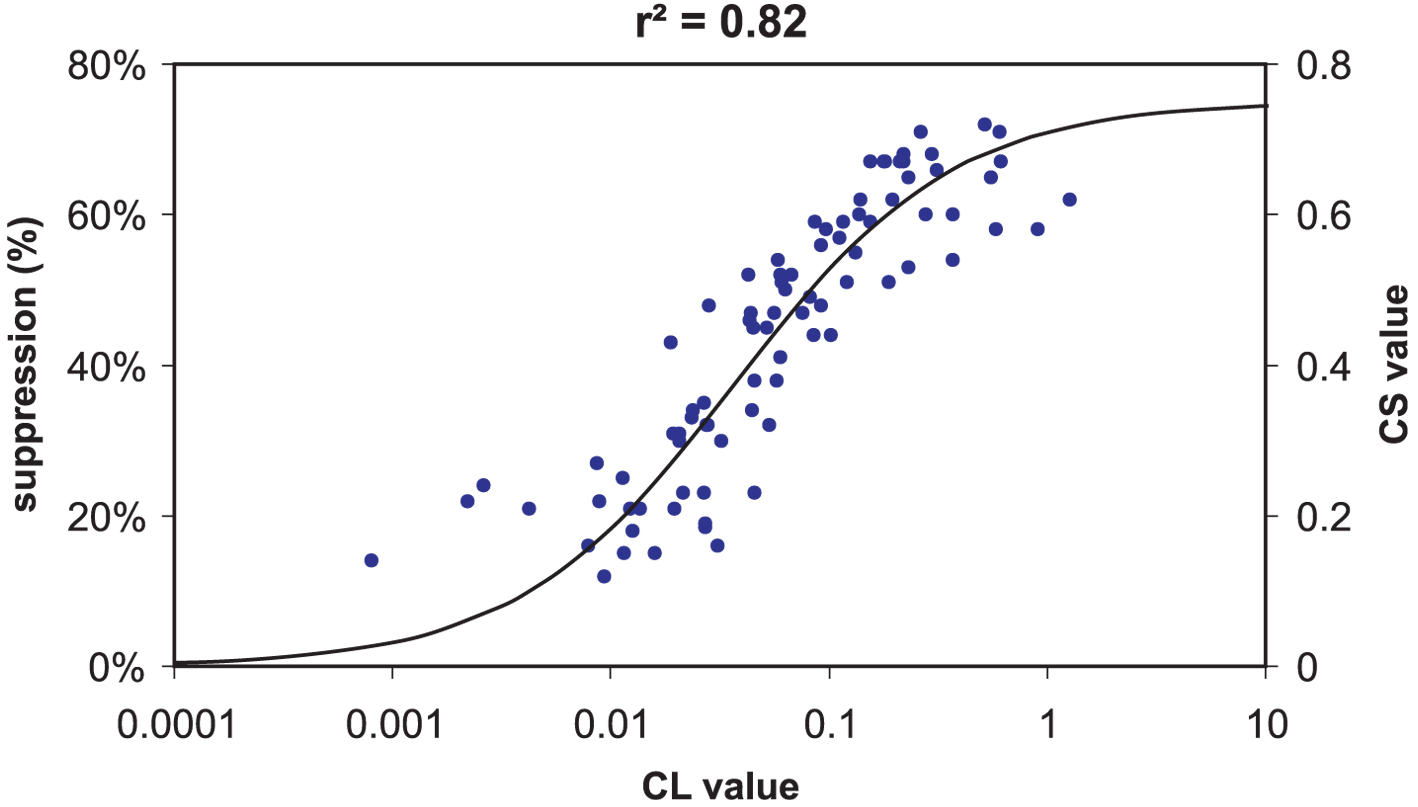 Figure 2
Figure 2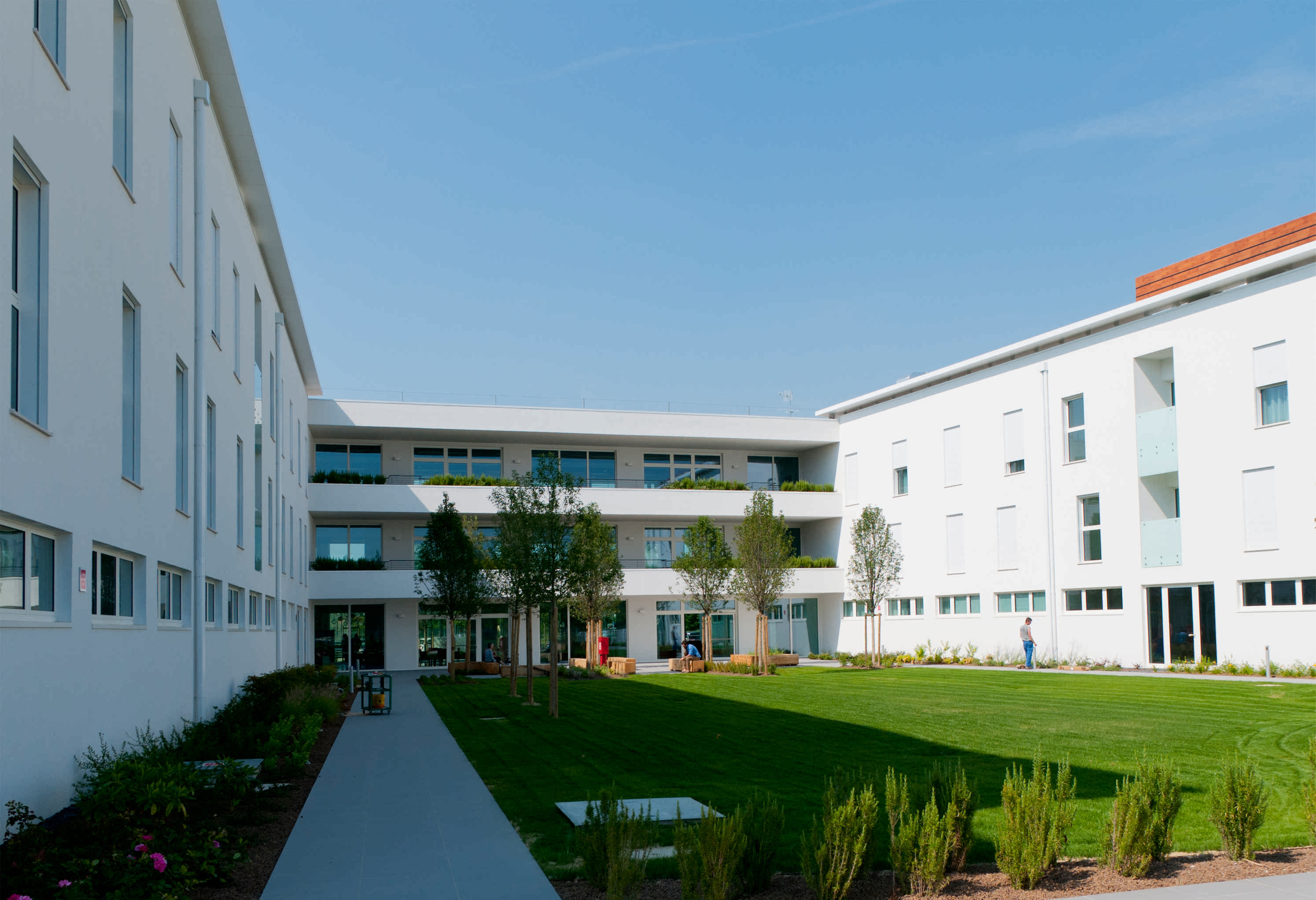 Figure 3
Figure 3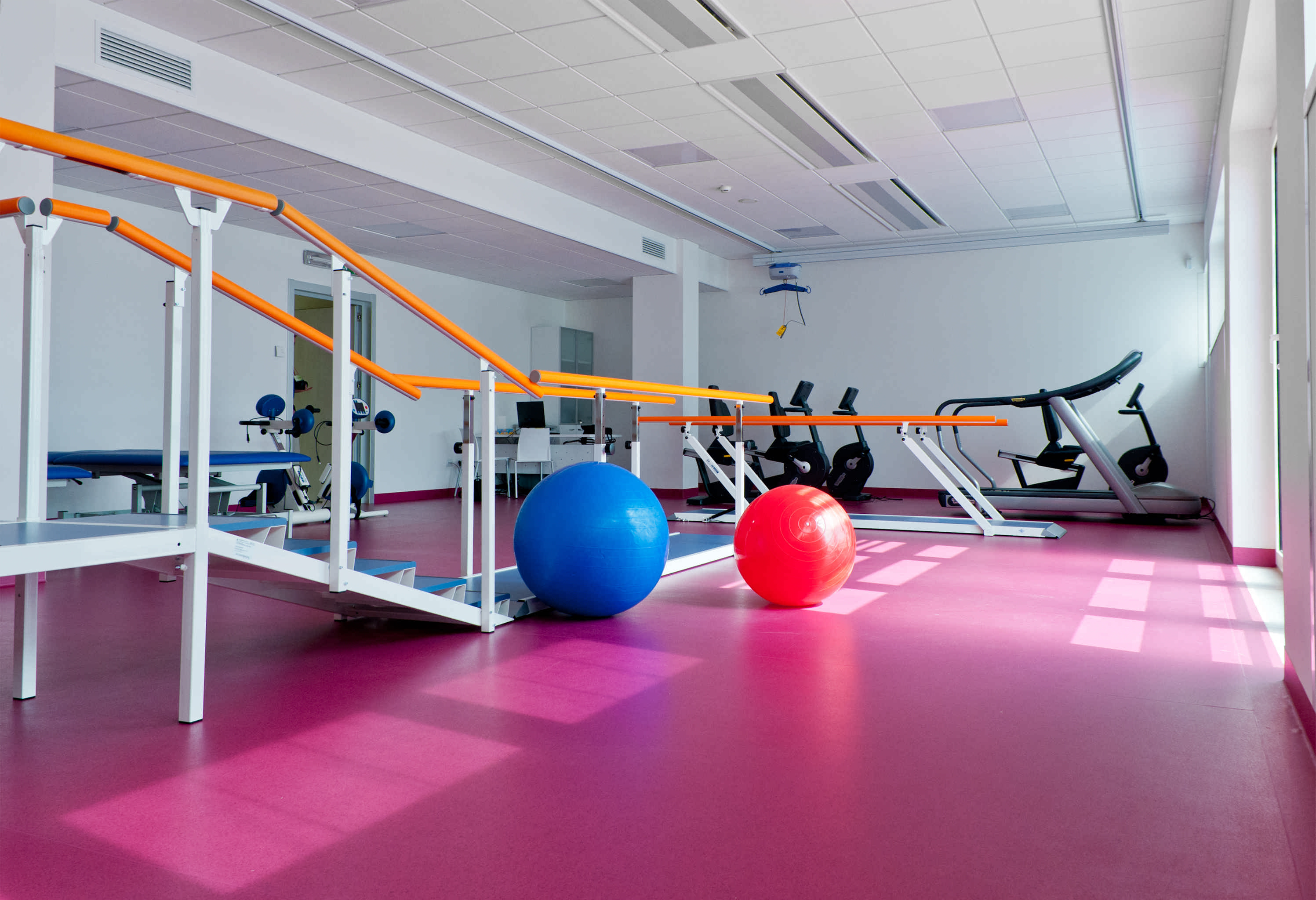 Figure 4
Figure 4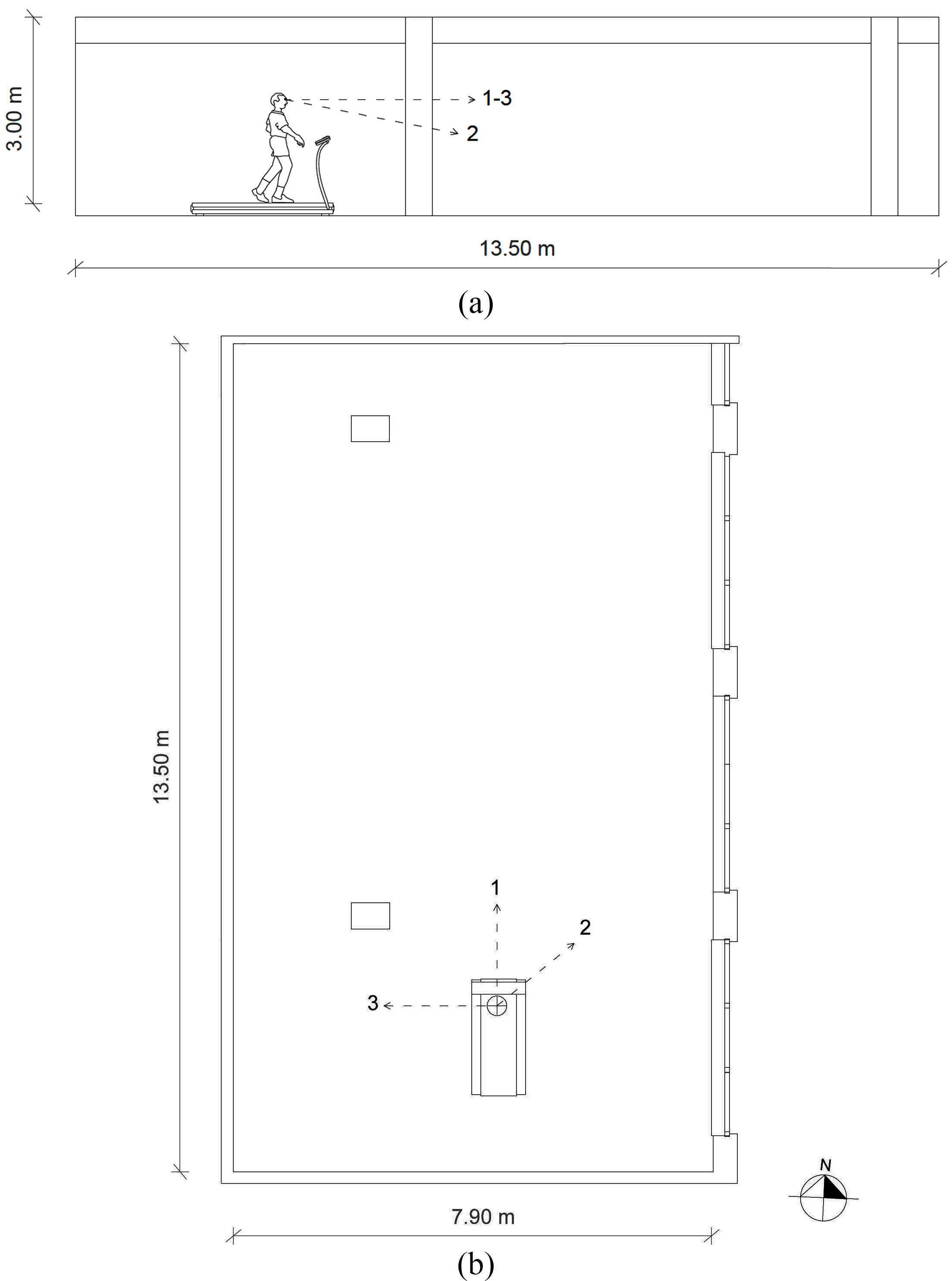 Figure 5
Figure 5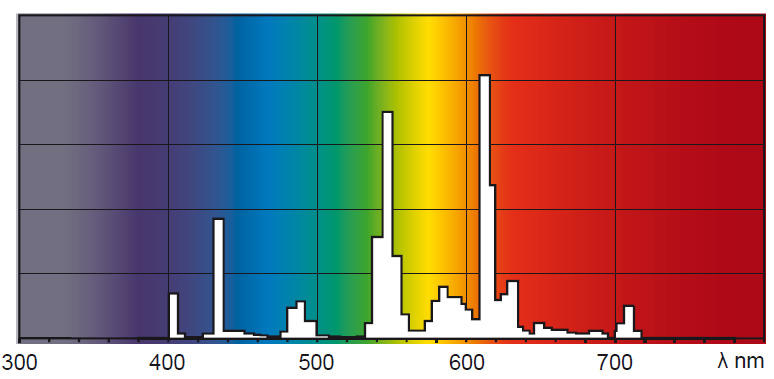 Figure 6
Figure 6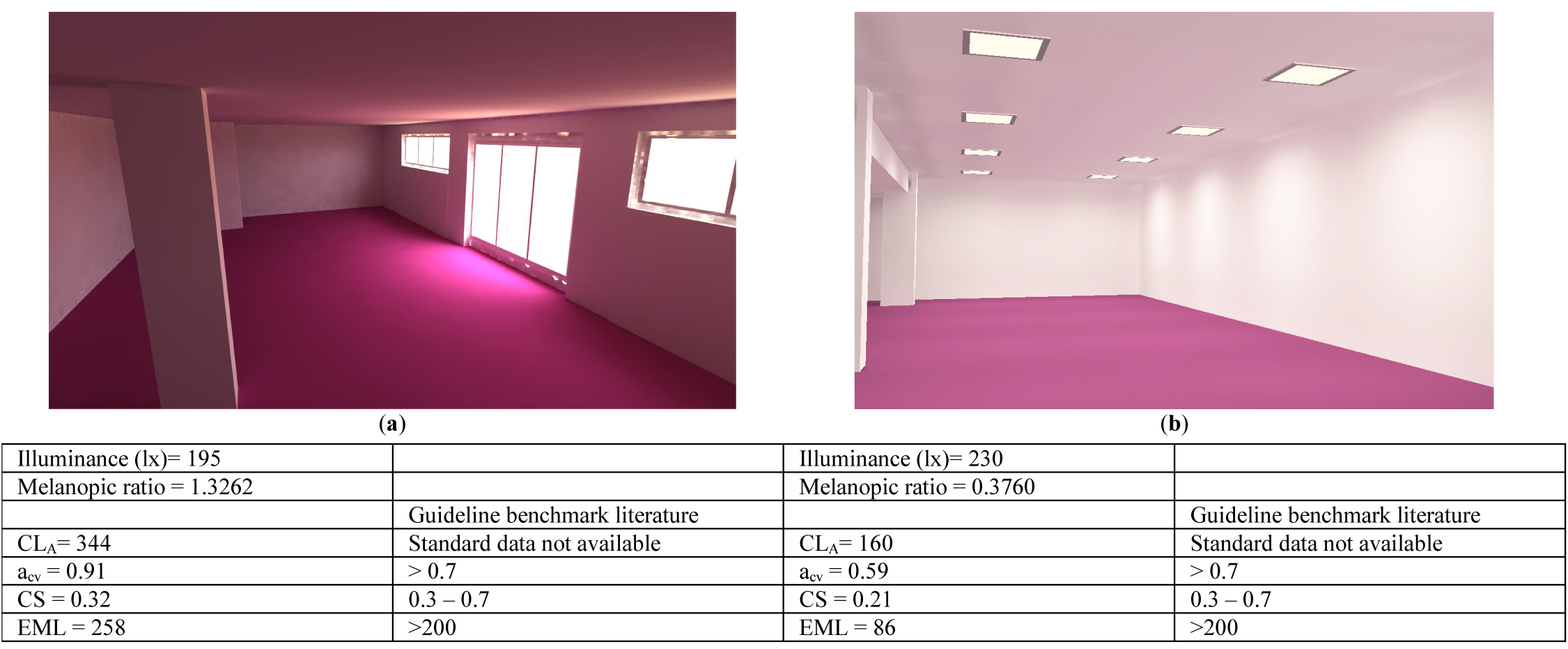 Figure 7
Figure 7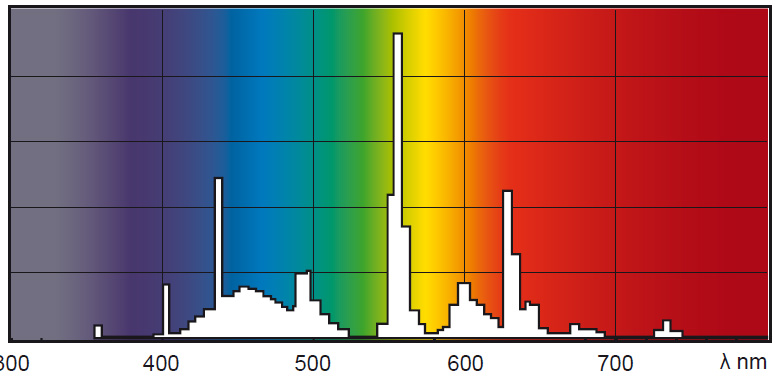 Figure 8
Figure 8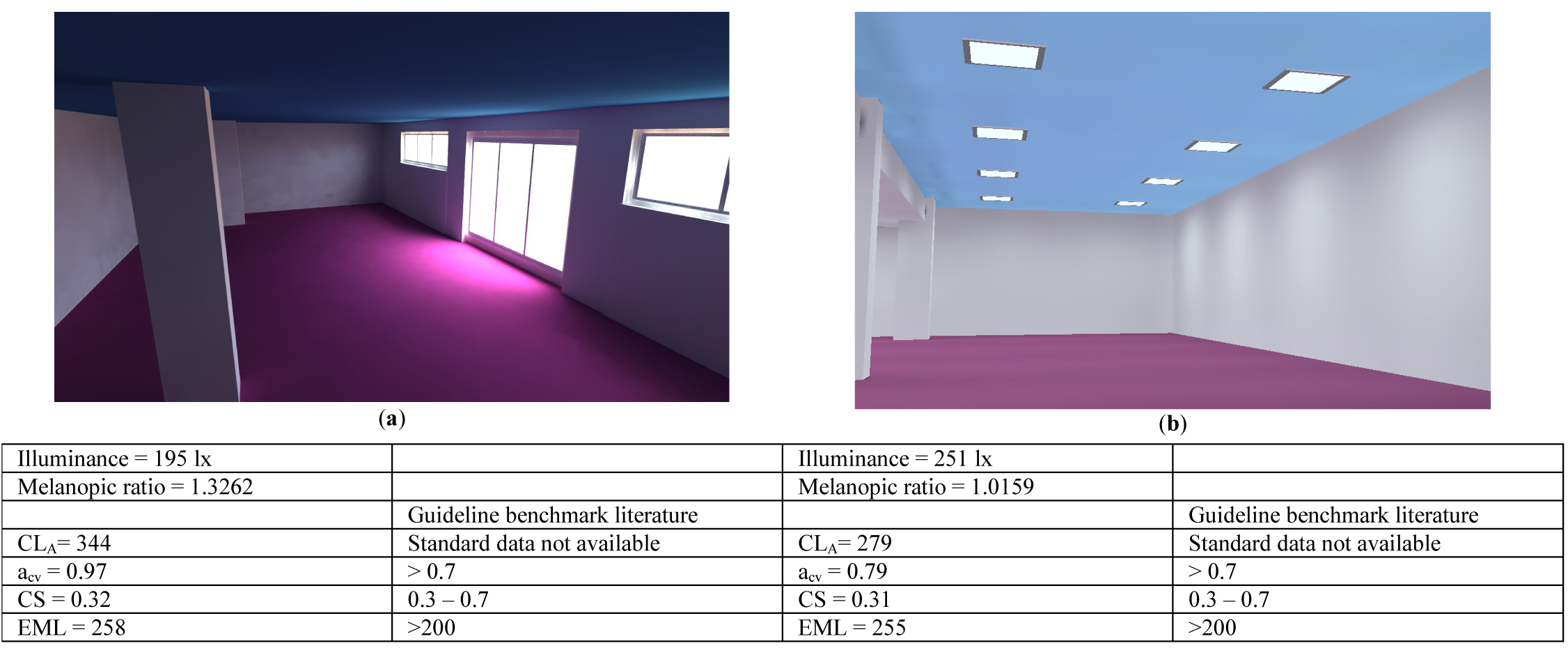 Figure 9
Figure 9 Figure 10
Figure 10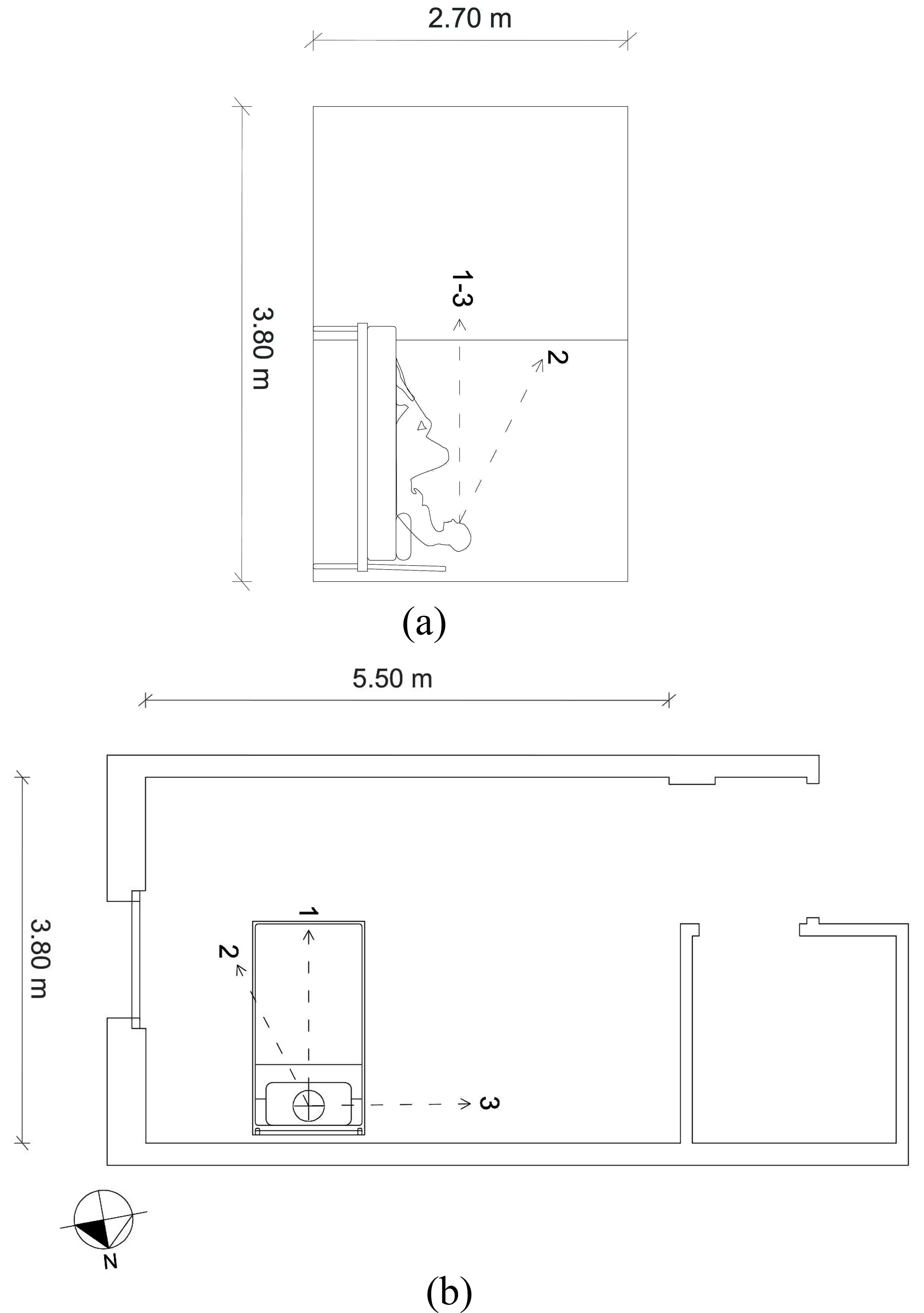 Figure 11
Figure 11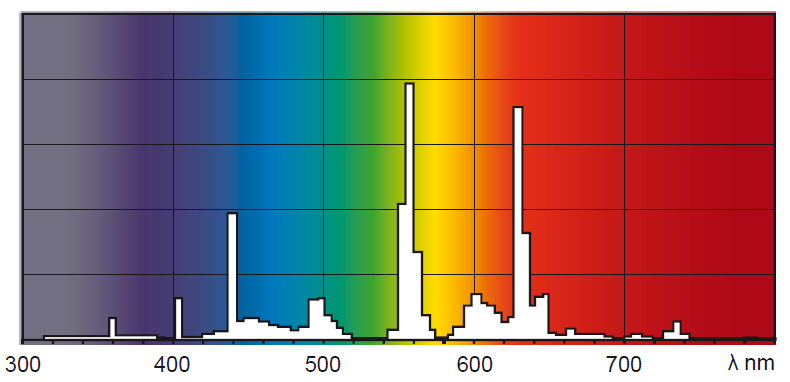 Figure 12
Figure 12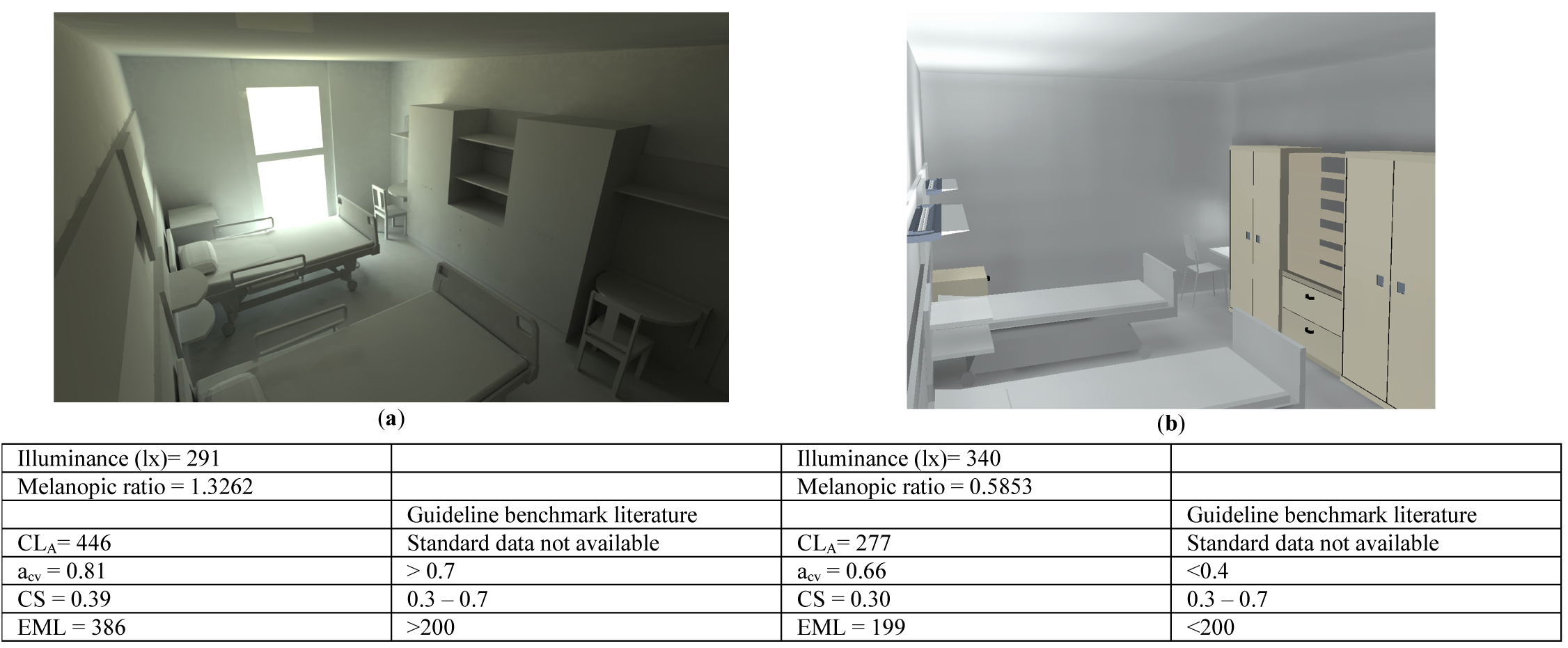 Figure 13
Figure 13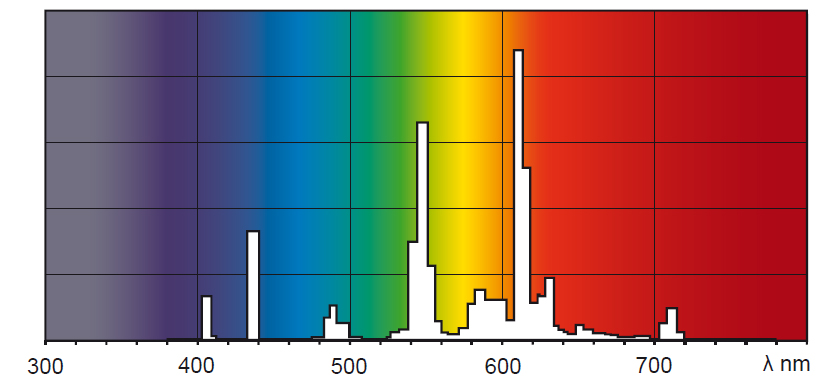 Figure 14
Figure 14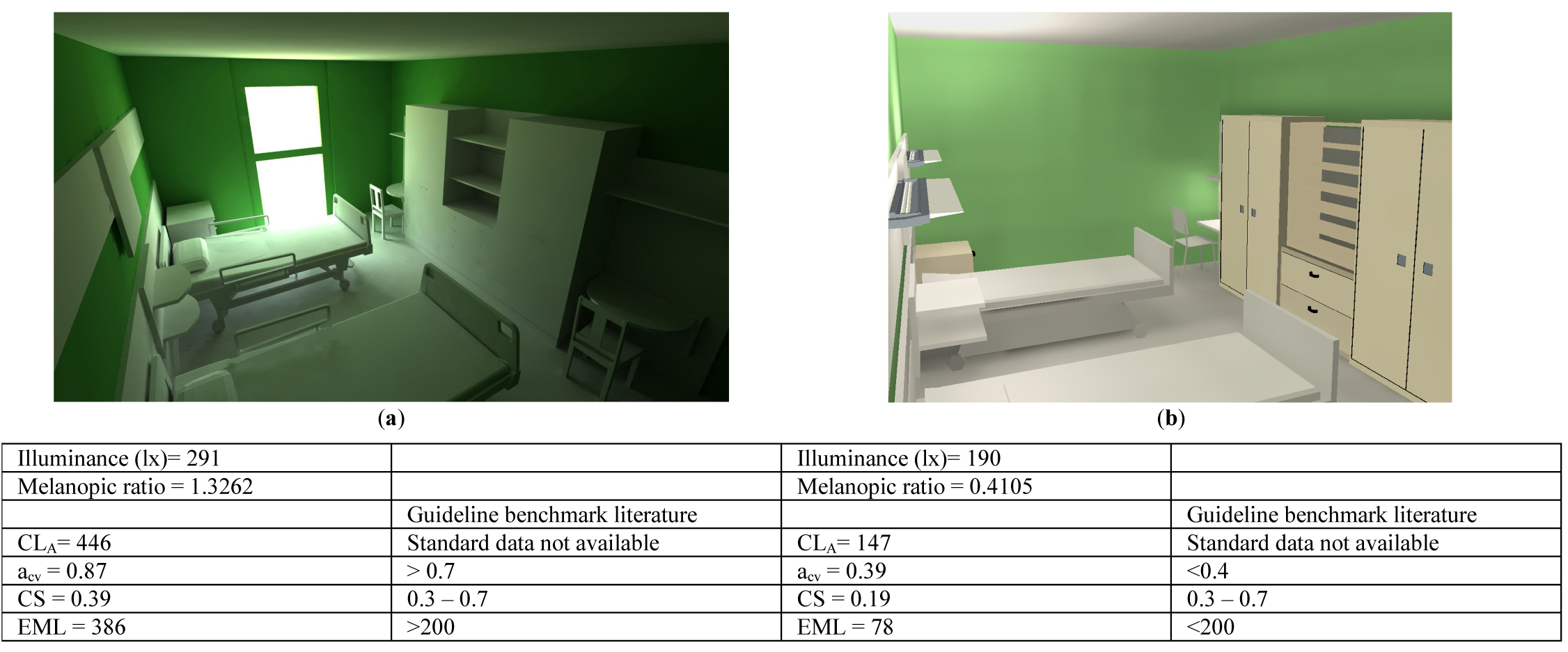 Figure 15
Figure 15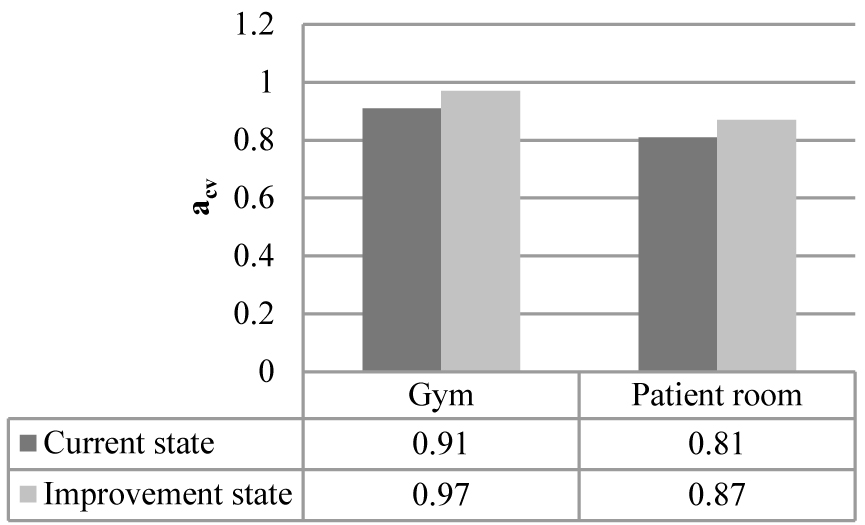 Figure 16
Figure 16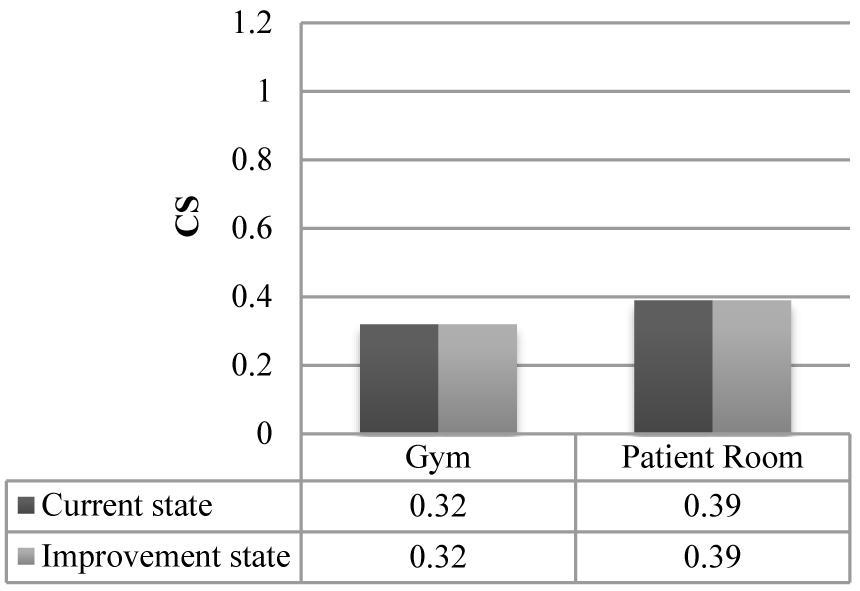 Figure 17
Figure 17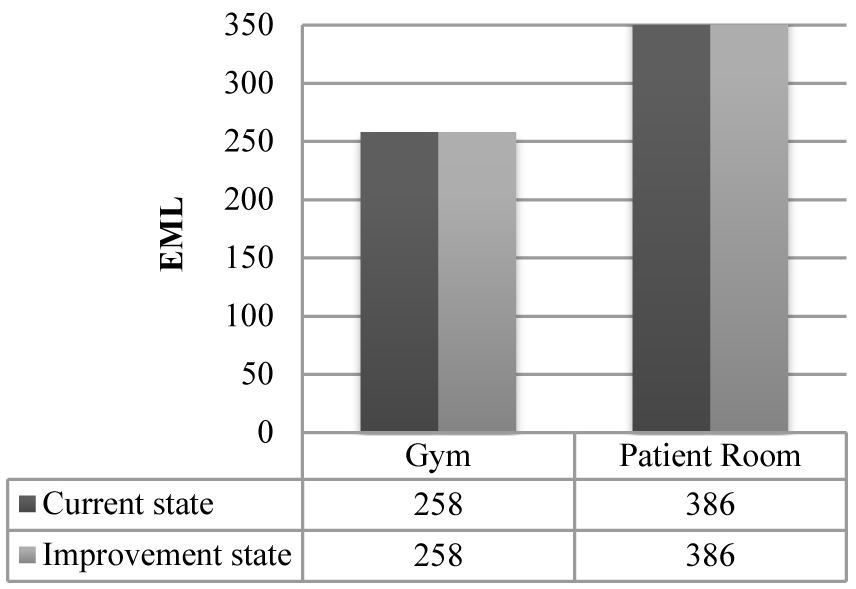 Figure 18
Figure 18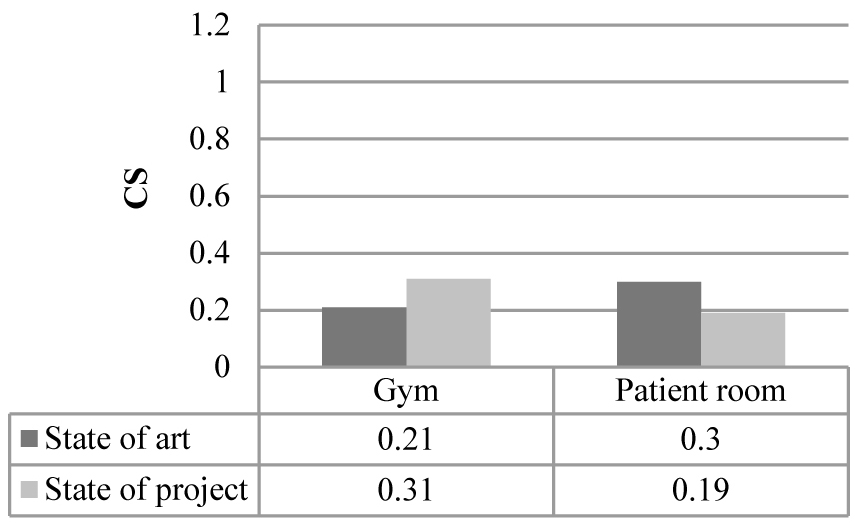 Figure 20
Figure 20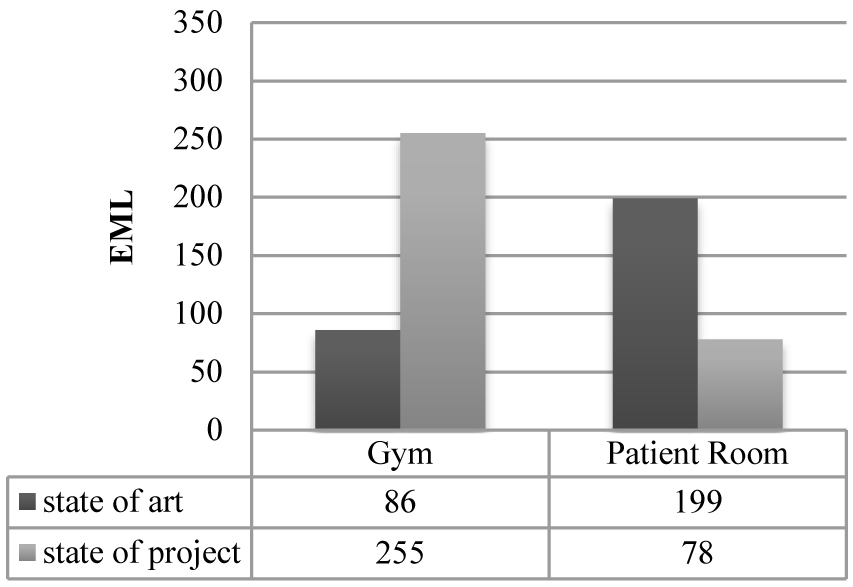 Figure 21
Figure 21



